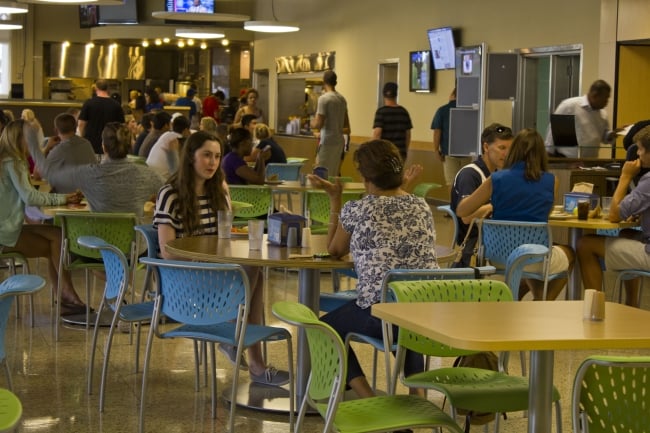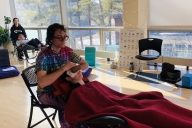You have /5 articles left.
Sign up for a free account or log in.

Lynn University
Students at Lynn University, a small private college in Florida, were probably happy enough that they can now get food on campus at any hour, since administrators decided to keep the sole cafeteria open 24/7.
As an unexpected bonus, they now can avoid the dreaded 8 a.m. class, too.
Lynn made the adjustment in dining hours for a pretty simple and obvious reason: administrators worried that students weren’t eating when they needed to. Athletes, working students and international students, many of whom tend to eat later, would regularly miss meals when the kitchen was only open for a few three-hour periods throughout the day.
Sure enough, with all-day access, students started coming in to eat later, sometimes using the cafeteria to study or socialize for hours at a time. But officials hadn’t exactly planned on what happened next: Instead of scheduling classes around when students can and can’t eat, they thought, why not get flexible?
So a two-hour 5 p.m. class that would have been unthinkable before is suddenly an option. And a popular one, at that. As the college experiments with course offerings throughout the day, it has quickly become clear that students much prefer that evening option to the early morning one.
And what of the faculty members who might feel the opposite?
“It’s our role to meet students where they are and find a time that works best for them educationally,” Vice President for Academic Affairs Gregg Cox said, noting that students are much more engaged, not to mention awake, in the evening. “If that’s what works best for our students, then that’s what we’re going to do.”
So in other words, professors, deal with it.
There are currently about 25 courses being offered in new time slots; in the fall, that number will approach 100. Eventually the least popular slots will be replaced with the most popular ones.
The 24-hour cafeteria is not unheard-of, but it’s most common on large campuses that serve student bodies in the five-digit range, General Manager of Dining Services Brian Bowser said. (Bowser works on campus but is actually employed through Sodexo, the company Lynn contracted with when it renovated and reopened the cafeteria last summer.) Lynn has about 1,750 undergraduates.
“We’re starting to see more and more institutions looking at this as an option for their student body,” Bowser said. Lynn appears to be one of the first institutions of its size to make such a transition.
Only three of the 10 food “platforms” close during the late-night hours of 9 p.m. to 6 a.m.; students can still get burgers, salads, fruit, sweets or even breakfast food if they want it. While it took a few weeks to catch on, the cafeteria has become a popular nighttime destination (primarily among those who live on campus), with upward of 300 visitors each night. That’s one-third of all students who have a meal plan.
Because students aren’t necessarily eating more – just differently – and because Sodexo covers labor costs, dining’s budget line hasn’t really changed.
“At the end of the day,” said Laurie Levine, vice president for business and finance, “it’s not costing us any more than the normal year-to-year increase that we were expecting to see.”
Late-night dining, 24-hour dining and food trucks are a few ways in which colleges are “meeting the students where the students are,” said Rachel A. Warner, director of communications and marketing for the National Association of College and University Food Services.
“It’s becoming more common as students’ schedules are changing…. They’re becoming a little bit more nomadic than they’ve been in the past,” Warner said. “Instead of the traditional meal times, students are migrating to different patterns, and I think [colleges] are accommodating that.”




